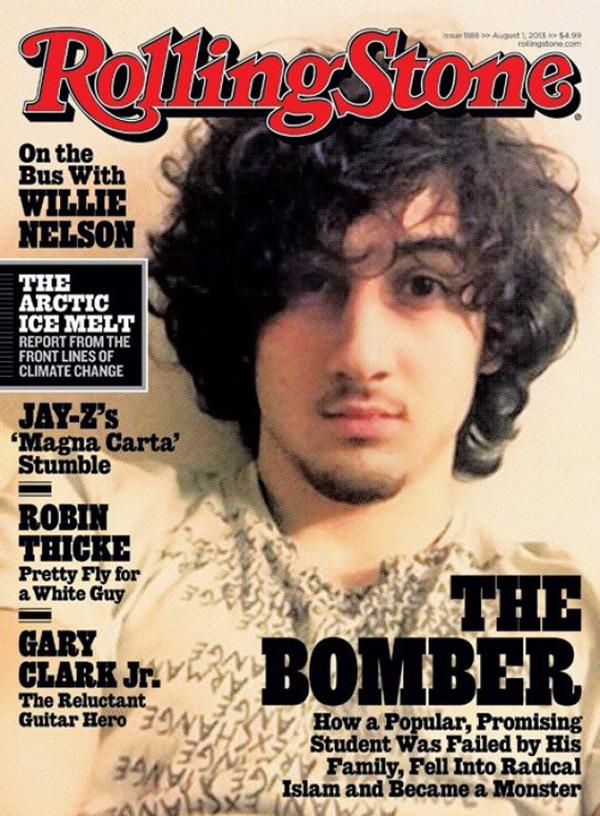
Controversy has ignited over yesterday’s reveal that Rolling Stone Magazine’s August issue will display Boston Bomber Dzhokhar Tsarnaev’s face on its cover. The cover headline reads, “How a popular, promising student was failed by his family, fell into radical Islam and became a monster.”
A Twitter-wide cringe erupted once the cover—featuring a “dreamy” photo of the alleged bomber, who pleaded not guilty to all of his offenses, including three counts of murder earlier this month—was revealed. Invoking rage by many who have been considering it a lazy, shameful case of glorifying and sympathising with a perpetrator; turning a criminal in to a celebrity, and just being downright tasteless, the cover has stirred the internet in turmoil. Let’s be honest, there’s certainly a danger in elevating Tsarnaev to join the star studded alumni who have graced the magazine’s covers in the past: associating any Rolling Stone cover star with celebrity is a clear link, and, arguably, it’s the kind of fame that Tsarnaezv has no right to deserve.
The controversy has stemmed further, with Rolling Stone adamantly defending their cover and the story—a two month long investigation by journalist Janet Reitman, which you can read in full here—despite the immediate boycott of news outlets, and commenters on Rolling Stone simply saying, “Cancel my subscription now.”
What’s interesting in the Rolling Stone outrage that has ensued today is that the same photo of Tsarnaev was splayed across the cover of The New York Times in May this year: it’s safe to assume there were no boycotts of the nation’s most respected newspaper for essentially committing the same offense. Similarly, TIME magazine showed smiling photos of the Columbine shooters on their cover in 1999, but received nowhere near as much protest; the line between what we widely perceive as ‘news’ and ‘culture’ publications has today shown us the importance of their definitions.
Rolling Stone defended the cover by affirming that it was unnerving, daring and respectable journalism, saying it was a terrifically important piece because Tsarnaev is the same age as its readers. As an article on Slate points out, what is most unsettling about the cover is the fact that Tsarnaev looks disturbingly like someone we may know; we become burdened by his face-value reliability, which is so ill-fitting for his heinous actions: “We may want the media to reconfirm for us that psychopaths are crazed, nutty, creepy recluses whom we can easily identify and thus avoid. But, as this cover reminds us, that simply isn’t the case.”
Boston Mayor Thomas Menino penned a scathing, heartfelt letter to Rolling Stone, in an attempt to remind the magazine of the heroes of the Boston Bombing who deserve respectful recognition, not the criminals:
“To respond to you in anger is to feed into your obvious marketing strategy. So, I write to you instead to put the focus where you could have: on the brave and strong survivors and on the thousands of people—their family and friends, volunteers, first responders, doctors, nurses and donors, who have come to their side….The survivors of the Boston attacks deserve Rolling Stone cover stories, though I no longer feel that Rolling Stone deserves them.”

Via SMH.



